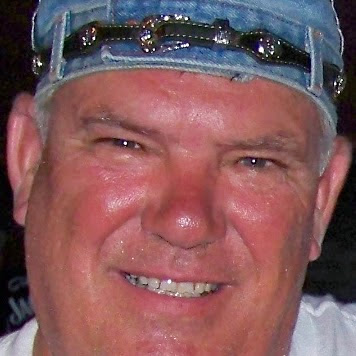Steven M Howe
age ~68
from Rochester, MN
- Also known as:
-
- Steven Jm Howe
- Steve Howe
- Phone and address:
-
2951 Mayowood Common Cir SW, Rochester, MN 55902
5072851507
Steven Howe Phones & Addresses
- 2951 Mayowood Common Cir SW, Rochester, MN 55902 • 5072851507
Lawyers & Attorneys

Steven Howe - Lawyer
view sourceOffice:
D'Agosto & Howe, LLC
Specialties:
Insurance Defense
Subrogation
Workers Compensation
Personal Injury
Subrogation
Workers Compensation
Personal Injury
ISLN:
914125608
Admitted:
1995
University:
Boston University, B.A., 1992; Boston University, B.A., 1992; Boston University, B.A., 1992
Law School:
University of Connecticut School of Law, J.D., 1995
Us Patents
-
Disk Drive Incompatible Firmware Recovery
view source -
US Patent:6446199, Sep 3, 2002
-
Filed:Jun 6, 1995
-
Appl. No.:08/469420
-
Inventors:Steven Michael Howe - Rochester MN
Jack Charles Kruger - Rochester MN -
Assignee:International Business Machines Corporation - Armonk NY
-
International Classification:G06F 900
-
US Classification:713 1, 713100, 714 6
-
Abstract:In a disk type data storage device wherein the firmware used to control the device is partitioned with a first portion stored in the control circuitry and a second portion stored in the reserved area of the disk surface, the replacement of one of the portions in the field may cause the drive to have different levels or releases of firmware that will not function together. This disables the drive until diagnosed and connected. The structure disclosed includes identifiers associated with the firmware portions and the provision of a copy of the firmware first portion as well as the firmware second portion on the disk. The firmware first portion on the disk is normally never accessed and is a version compatible with the firmware second portion on the disk. During the power up sequence, the identifiers are checked for compatibility and the sequence normally continues. In the event that a portion of the firmware has been replaced and a finding of incompatibility occurs, the ROM, first portion of firmware (stored in electrically erasable, electrically programmable read only memory) in the control circuitry is erased and replaced by the firmware first portion stored on the disk.
-
Write Cache Recovery After Loss Of Power
view source -
US Patent:7100080, Aug 29, 2006
-
Filed:May 5, 2003
-
Appl. No.:10/430535
-
Inventors:Steven M. Howe - Rochester MN, US
-
Assignee:Xiotech Corporation - Eden Prairie MN
-
International Classification:G06G 11/00
-
US Classification:714 24, 711135
-
Abstract:A method for recovering dirty write cache data after controller power loss or failure from one of two independently battery backed up and mirrored write caches. Two independent controllers jointly operate with a permanent data storage system. Each controller has a write cache that is a mirror of the write cache in the other controller. The primary controller resets a power down flag stored each write cache upon proper shutdown. The primary controller further increments and stores a configuration sequence number into each write cache upon proper shutdown. If a primary controller powers up and identifies that the write cache was not properly shutdown due to the state of the power down flag, it flushes the dirty data in the write cache only if the configuration sequence number contained in the write cache is the same as the configuration sequence number contained in the primary controller. If the configuration sequence number in the primary controller is higher than the configuration sequence number in the write cache, the dirty data was previously flushed to permanent data storage with the other write cache.
-
Method And Apparatus For Recovering Redundant Cache Data Of A Failed Controller And Reestablishing Redundancy
view source -
US Patent:7162587, Jan 9, 2007
-
Filed:May 5, 2003
-
Appl. No.:10/430487
-
Inventors:Michael S. Hiken - Rochester MN, US
Steven M. Howe - Rochester MN, US
James N. Snead - Evota MN, US -
International Classification:G06F 15/177
-
US Classification:711135, 711162
-
Abstract:A method, and apparatus for recovering cache data of a failed redundant storage controller and reestablishing redundancy by mirroring cache data of a primary cache memory of a first storage controller in a secondary cache memory of another storage controller. Upon a failure occurring in a storage controller, the failure is detected and, in response, a structured list of cache tags is created in the controller where having the secondary cache that is the mirror of the primary cache of the failed controller. The primary cache memory of the non-failed storage controller that was mirrored in the secondary cache of the failed controller and the secondary cache memory of the non-failed storage controller that was linked to the primary cache of the failed controller are flushed, and an available secondary cache memory, which may be the secondary cache memory just flushed, is configured to function as a redundant cache memory for the primary cache memory of the non-failed storage controller that was mirrored in the secondary cache of the failed controller, such that cache data in the primary cache memory of the non-failed storage controller is mirrored in the available secondary cache memory.
-
Method For Updating Memory Resident Firmware As A Background Operation
view source -
US Patent:7380113, May 27, 2008
-
Filed:May 5, 2003
-
Appl. No.:10/430607
-
Inventors:David S. Ebsen - Chaska MN, US
Todd R. Burkey - Savage MN, US
Steven M. Howe - Rochester MN, US
Randal S. Rysavy - Kasson MN, US -
Assignee:Xiotech Corporation - Eden Prairie MN
-
International Classification:G06F 9/24
-
US Classification:713 1, 713100
-
Abstract:A method of upgrading firmware during background operation in a storage area network (SAN) including at least one storage controller having programmable memory and RAM, where the at least one storage controller for controls data access between at least one host server and at least one storage device. The method includes temporarily suspending data access commands from the at least one host server, upgrading firmware stored in programmable memory, and copying a current version of firmware in a first memory address of RAM to a second memory address in the RAM. The current version of firmware in the first memory address in RAM is overwritten with the upgraded version of firmware. The controller is reinitialized, and data access commands from the at least one host server to the at least one storage device are provided by the at least one storage controller.
-
Performing Writing Operations Using A Queue Of Available Pages
view source -
US Patent:20120185658, Jul 19, 2012
-
Filed:Jan 18, 2011
-
Appl. No.:13/008061
-
Inventors:William A. Brown - Pine Island MN, US
Thomas R. Crowley - Rochester MN, US
Steven M. Howe - Rochester MN, US -
Assignee:INTERNATIONAL BUSINESS MACHINES CORPORATION - Armonk NY
-
International Classification:G06F 12/16
-
US Classification:711162, 711E12103
-
Abstract:A method for performing a write operation on a computer system having a main store, including a plurality of pages, and a backing store, the write operation including a processing step for processing data of the write operation and a writing step for writing the processed data to the backing store. The method includes reserving a set of pages, among the plurality of pages, in the main store, retrieving a required number of pages from the reserved set in accordance with the size of the data, processing the required number of pages of the data using the retrieved pages, writing the processed data to the backing store, and returning the retrieved pages to the reserved set upon finishing the writing.
-
Emulating A Skip Read Command
view source -
US Patent:20120265948, Oct 18, 2012
-
Filed:Apr 18, 2011
-
Appl. No.:13/088665
-
Inventors:William A. Brown - Pine Island MN, US
Thomas R. Crowley - Rochester MN, US
Steven M. Howe - Rochester MN, US
Kristopher C. Whitney - Rochester MN, US -
Assignee:INTERNATIONAL BUSINESS MACHINES CORPORATION - Armonk NY
-
International Classification:G06F 12/00
-
US Classification:711154, 711E12001
-
Abstract:In an embodiment, a skip read command is received that requests transfer of a requested block from a storage device and that requests non-transfer of a skipped block from the storage device. The skip read command specifies a skip mask that comprises an identification of a location of the requested block relative to a location of the skipped block at the storage device. In response to the skip read command, the requested block and the skipped block are transferred from the storage device by creating a read command that requests transfer of the requested block and the skipped block and sending the read command to the storage device. In various embodiments, the skipped block is transferred to a temporary buffer and not transferred to a destination buffer, or the skipped block is transferred to the destination buffer, but overwritten by a transfer of the requested block to the destination buffer.
-
Disk Drive Employing Allocation-Based Scan Reporting
view source -
US Patent:59705086, Oct 19, 1999
-
Filed:Jun 24, 1997
-
Appl. No.:8/881081
-
Inventors:Steven M. Howe - Rochester MN
Daniel John Sokolov - Rochester MN -
Assignee:Western Digital Corporation - Irvine CA
-
International Classification:G06F 1200
-
US Classification:711113
-
Abstract:A method is provided for managing a cache in a disk drive having an intelligent interface for communicating with a host. The drive includes a magnetic disk, and the cache is divisible into a number of segments, and employs a cache control structure including cache parameters. The drive receives a first command and a second command. The method comprises the steps of: performing a scan of the cache to assign the first command to a segment; compensating the cache parameters in response to the scan; and performing a scan to assign the second command to a cache segment prior to caching of data requested in the first command.
-
Disk Drive Cache System Using A Dynamic Priority Sequential Stream Of Data Segments Continuously Adapted According To Prefetched Sequential Random, And Repeating Types Of Accesses
view source -
US Patent:60921498, Jul 18, 2000
-
Filed:May 28, 1997
-
Appl. No.:8/864525
-
Inventors:Michael Scott Hicken - Rochester MN
Steven M. Howe - Rochester MN
Daniel John Sokolov - Rochester MN
Timothy Swatosh - Rochester MN
Jeffrey L. Williams - Rochester MN -
Assignee:Western Digital Corporation - Irvine CA
-
International Classification:G06F 1200
-
US Classification:711113
-
Abstract:A magnetic disk drive with a caching system includes an intelligent interface to communicate with a host, a magnetic disk and a cache memory to buffer data transferred to and from the host. The caching system maximizes drive performance based on past access history. The caching system alters execution of commands by coalescing commands or executing internal commands in parallel. The caching system anticipates data requests by using a prefetch to store data that may be requested. The caching system divides the cache memory into segments to store multiple streams of data. The number of segments may be continuously adapted according to the types of access to maximize performance by maintaining a segment for each sequential stream of data. The caching system uses a dynamic priority list to determine segments to maintain and discard. Each segment is monitored to determine access types such as sequential, random, and repeating.
Name / Title
Company / Classification
Phones & Addresses
AMERICAN KINETIC ENVIRONMENTAL CONSULTING LLC
STEVEN R. HOWE AND ASSOCIATES, LLC
Wikipedia References

Steven Howe (Politician)
License Records
Steven E. Howe
License #:
A000605 - Expired
Category:
Social Work
Issued Date:
Apr 26, 2011
Expiration Date:
Jun 30, 2013 - Non-acticingpr
Type:
Certified Social Worker
Steven T Howe
License #:
E-5797 - Expired
Category:
Engineering Intern
Steven Craig Howe
License #:
64813 - Expired
Category:
Nursing Support
Issued Date:
Oct 27, 2009
Effective Date:
Nov 26, 2015
Expiration Date:
Oct 27, 2015
Type:
Medication Aide
Resumes

Traffic Signal Technician Ii
view sourceWork:
Oregon Dept of Transportation Jun 1993 - Apr 2000
Traffic Signal Technician Ii
Traffic Signal Technician Ii

Steven Howe
view source
Steven Howe
view source
Steven Howe
view source
Steven Howe
view source
Steven Howe
view sourceSkills:
Microsoft Office
Microsoft Excel
Microsoft Word
Powerpoint
Microsoft Excel
Microsoft Word
Powerpoint
Medicine Doctors

Steven W. Howe
view sourceSpecialties:
General Practice
Work:
Marietta Healthcare Physician IncMarietta Memorial Hospital Primary Care
300 E 8 St STE 121, Marietta, OH 45750
7403747464 (phone), 7403731562 (fax)
300 E 8 St STE 121, Marietta, OH 45750
7403747464 (phone), 7403731562 (fax)
Education:
Medical School
A.T. Still University of Health Sciences/ Kirksville College of Osteopathic Medicine
Graduated: 1983
A.T. Still University of Health Sciences/ Kirksville College of Osteopathic Medicine
Graduated: 1983
Procedures:
Destruction of Benign/Premalignant Skin Lesions
Osteopathic Manipulative Treatment
Arthrocentesis
Electrocardiogram (EKG or ECG)
Pulmonary Function Tests
Vaccine Administration
Osteopathic Manipulative Treatment
Arthrocentesis
Electrocardiogram (EKG or ECG)
Pulmonary Function Tests
Vaccine Administration
Conditions:
Angina Pectoris
Anxiety Phobic Disorders
Attention Deficit Disorder (ADD)
Benign Prostatic Hypertrophy
Bipolar Disorder
Anxiety Phobic Disorders
Attention Deficit Disorder (ADD)
Benign Prostatic Hypertrophy
Bipolar Disorder
Languages:
English
Description:
Dr. Howe graduated from the A.T. Still University of Health Sciences/ Kirksville College of Osteopathic Medicine in 1983. He works in Marietta, OH and specializes in General Practice. Dr. Howe is affiliated with Marietta Memorial Hospital.
Plaxo

Steven Howe
view sourceReno and Silicon ValleyRegional Manager at Rabbit Office Automation Past: Regional Manager-Print Managment at Mr Copy/Xerox
Classmates

Steven Howe
view sourceSchools:
John B. Dey Elementary School Virginia Beach VA 1967-1970
Community:
Krisann Larson, Carol Johnson, Debby Backus, Charles Mehle, Renee Finley, Melody Yavener

Steven Howe
view sourceSchools:
West High School Wausau WI 2000-2004
Community:
Kerry Scherer, Jane Rusch

Steven Howe
view sourceSchools:
Monte Vista High School Danville CA 1982-1986
Community:
Lisa West, Karen Gibbons, Debi Westman, Jon Ellis, Mary Leslie, Jack Aiello

Steven Howe
view sourceSchools:
Elmhurst High School Ft. Wayne IN 1969-1973

Steven Howe
view sourceSchools:
Mt. Assumption Institute Plattsburgh NY 1962-1966
Community:
James Morgan, Joseph Condo, Clifford Szablewski, Mike Kennedy, Thomas Gaffney, Dan Jerry, Dennis Chamberland, Michael Proverdi, Thomas Foley, Henry Benway, Stephen Jabaut

Steven Howe
view sourceSchools:
Greely Elementary School Ottawa Morocco 1992-1996
Community:
Teri Quinn, Glen Wilson, Valerie Fehr, Richard Dunbar

Steven Howe
view sourceSchools:
Schawb Junior High School Cincinnati OH 1964-1966
Community:
Keshia Townsend

Steven Michael Howe
view source
Steven Howe
view source
Steven P Howe
view source
Steven M Howe
view source
Steven Joe Howe
view source
Steven Howe Gutteridge
view source
Steven Howe Jr
view source
Steven Howe
view sourceGoogleplus

Steven Howe
Work:
YouTube - Video commentator
Education:
Chilton Trinity

Steven Howe
Relationship:
In_a_relationship

Steven Howe

Steven Howe

Steven Howe

Steven Howe

Steven Howe

Steven Howe
Youtube
Myspace
Flickr
Get Report for Steven M Howe from Rochester, MN, age ~68


















